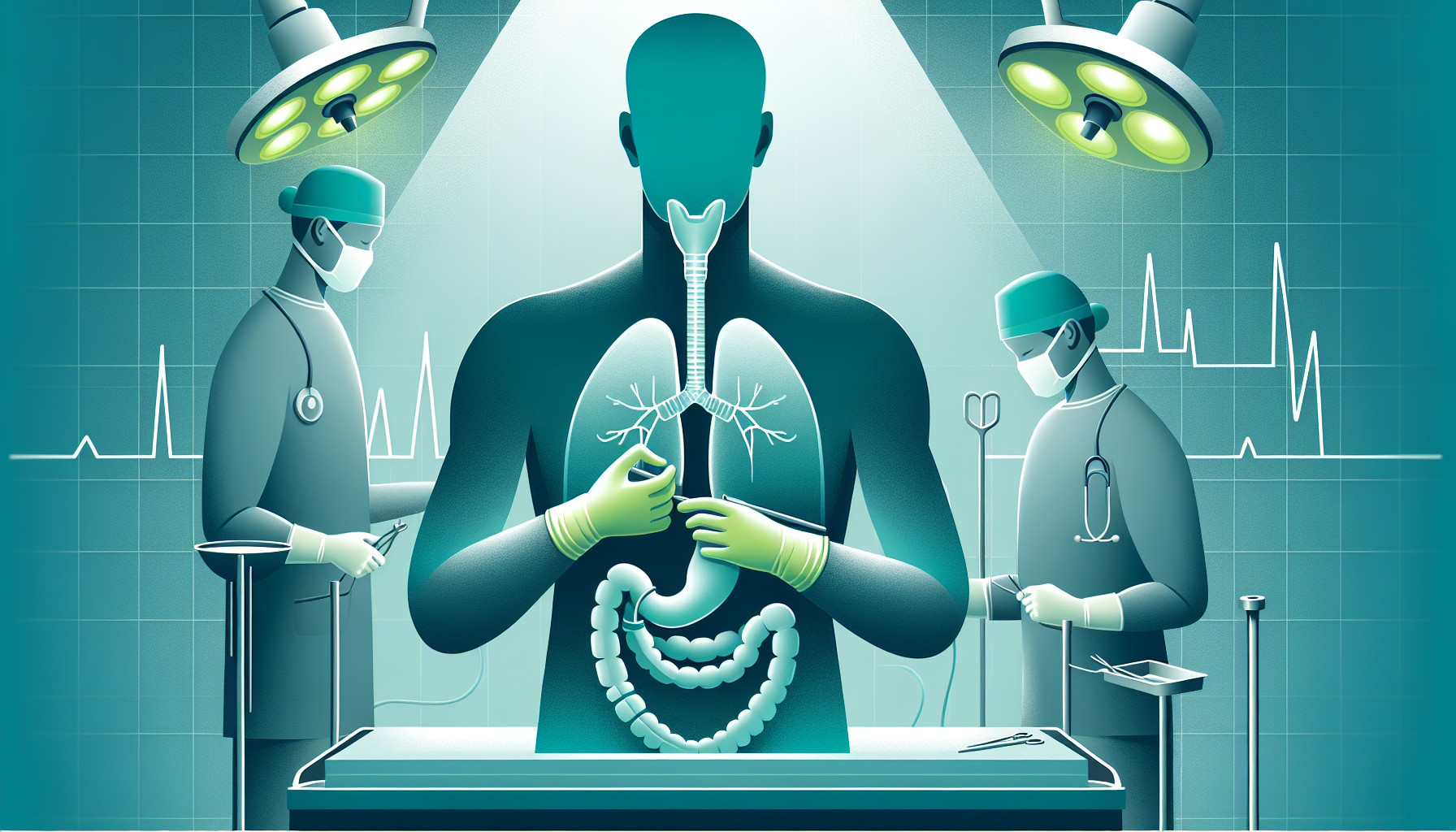Our Summary
This research paper discusses the importance of esophagectomy, a surgery performed to remove part or all of the esophagus, in treating esophageal cancer. It acknowledges that this procedure is complicated and can result in many postoperative complications. Therefore, radiologists, who interpret imaging studies, must understand the different surgical techniques used and potential complications that may arise.
The paper describes several common esophagectomy techniques, including transthoracic esophagectomies and transhiatal esophagectomy. It also notes that these techniques can vary, particularly in the choice of conduit, which is an organ or tissue used to replace the removed part of the esophagus. The stomach, colon, or jejunum (part of the small intestine) can all be used as conduits.
The study underscores the critical role of postoperative imaging in identifying complications early. Techniques such as chest x-rays, esophagrams (x-rays of the esophagus), and computed tomographic scans are essential in this regard. Lung complications and leaks at the surgical site are the main causes of health problems and death following esophagectomy.
The paper also describes an esophagographic technique used to detect complications. This involves injecting contrast material into a tube placed in the patient’s nose and leading to the stomach. The paper concludes by emphasizing the vital role of radiologists in the treatment of patients undergoing esophagectomy, given their ability to identify and understand potential complications.
FAQs
- What is an esophagectomy and why is it performed?
- What are the most common types of esophagectomy techniques?
- What are the potential postoperative complications of an esophagectomy?
Doctor’s Tip
One helpful tip a doctor might tell a patient about esophagectomy is to closely follow postoperative care instructions, including taking prescribed medications, attending follow-up appointments, and maintaining a healthy diet and lifestyle to aid in recovery and reduce the risk of complications. It is also important to communicate any concerning symptoms or changes in health to your healthcare provider promptly.
Suitable For
Patients who are typically recommended for esophagectomy are those with localized or locally advanced esophageal cancer that is amenable to surgical resection. Other indications for esophagectomy include high-grade dysplasia in Barrett’s esophagus, refractory benign esophageal strictures, and end-stage achalasia.
Esophagectomy may be recommended for patients who have failed or are not candidates for less invasive treatments such as endoscopic mucosal resection, radiofrequency ablation, or chemotherapy and radiation therapy. Patients who are generally considered for esophagectomy are those who are in good overall health and have a reasonable life expectancy.
It is important for patients to undergo a thorough preoperative evaluation to determine their suitability for esophagectomy. This evaluation may include imaging studies, such as CT scans and PET scans, as well as endoscopic evaluation of the esophagus.
Overall, patients who are recommended for esophagectomy are those who have a good chance of benefiting from the procedure and have a low risk of complications. It is important for patients to discuss the risks and benefits of esophagectomy with their healthcare providers to make an informed decision about their treatment options.
Timeline
Before esophagectomy:
- Patient undergoes various diagnostic tests such as endoscopy, CT scans, and biopsies to confirm the presence of esophageal cancer
- Patient may undergo neoadjuvant chemotherapy or radiation therapy to shrink the tumor before surgery
- Patient meets with a multidisciplinary team including surgeons, oncologists, and nutritionists to discuss the surgery and postoperative care
During esophagectomy:
- Surgery is typically performed under general anesthesia and can last several hours
- Surgeon removes part or all of the esophagus, as well as nearby lymph nodes
- Depending on the type of esophagectomy, a portion of the stomach or intestine may be used to reconstruct the esophagus
- Patient may stay in the hospital for 1-2 weeks after surgery to recover
After esophagectomy:
- Patient will have a nasogastric tube in place to drain fluids and may gradually start a liquid diet
- Patient will work with a physical therapist to regain strength and mobility
- Patient may experience complications such as anastomotic leaks, pulmonary issues, or delayed complications like strictures
- Patient will have regular follow-up appointments with their oncologist and surgeon to monitor for disease recurrence
Overall, the recovery process after esophagectomy can be lengthy and challenging, but with proper care and monitoring, many patients are able to resume a good quality of life.
What to Ask Your Doctor
What is the purpose of the esophagectomy procedure in my case?
What are the potential risks and complications associated with esophagectomy?
How experienced is the surgical team in performing esophagectomy procedures?
What is the expected recovery time following esophagectomy surgery?
What type of follow-up care will be needed after the procedure?
What dietary changes will be necessary after esophagectomy?
How will the surgery affect my ability to swallow and digest food?
What are the signs and symptoms of complications that I should watch for after surgery?
Will I need any additional treatments, such as chemotherapy or radiation therapy, after the esophagectomy?
What is the long-term prognosis following esophagectomy for my specific condition?
Reference
Authors: Flanagan JC, Batz R, Saboo SS, Nordeck SM, Abbara S, Kernstine K, Vasan V. Journal: Radiographics. 2016 Jan-Feb;36(1):107-21. doi: 10.1148/rg.2016150126. PMID: 26761533
